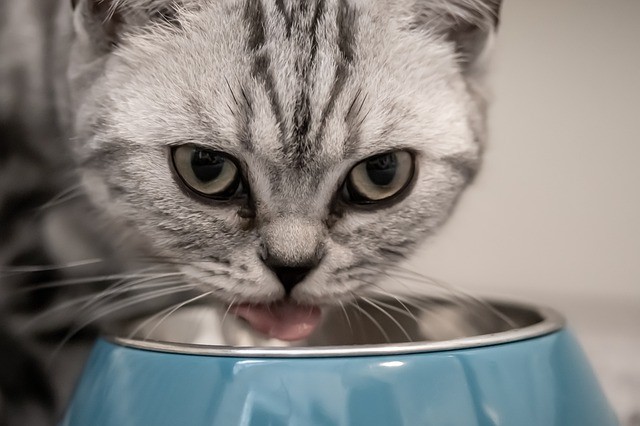
Chronic Kidney Disease (CKD) is a disease normal in two cats and individuals. On the off chance that you’re not really settled that kidney harm has been progressing for over 90 days, it is considered chronic and will require close checking and intercession.
These are a couple of the many terms used to portray CKD in cats including the accompanying :
- Chronic Renal/Kidney Disease (CKD)
- Chronic Renal/Kidney Disappointment
- Chronic Renal/Kidney Inadequacy
- Renal/Kidney Disease
In the event that the deficiency of typical capacity happens rapidly, it’s alluded to as intense kidney disease. Intense kidney disease is brought about by unexpected occasions that harm the kidneys, for instance, a cat ingesting poisonous radiator fluid from a vehicle, blood coagulation framing in the kidney, bacterial contamination in the kidney, or mineralized stones hindering pee. Intense kidney disease can strike at whatever stage in life. Luckily, in case it’s analyzed and treated speedily, the harm to the kidneys can regularly be turned around.
Chronic kidney disease is a bunch of signs and side effects that are brought about by moderate degeneration of utilitarian kidney tissue. Despite the fact that we don’t have a clue about the specific reason for CKD, the disease movement can be dialed back with appropriate consideration and your cat can carry on with a cheerful and sound life.
How do ordinary kidneys work?
Kidneys assume a truly significant part in our bodies just like the groups of our cats. Kidneys free the collection of poisons that in any case would aggregate and cause disease.
Solid kidneys are pecan-measured organs located in your cat’s mid-region just underneath the spine. Their primary job is to channel the overabundance of liquid and harmful material items from the body into the pee. Inside the typical kidney, there is huge number of filtration units known as nephrons. As the heart siphons blood into the kidneys, liquid, byproducts, and salts, known as electrolytes, are conveyed to the kidneys from different spaces of the body.
Inside the nephrons, these are separated from the blood. This separated liquid then, at that point, travels through an arrangement of tubules. In the tubules, some liquid and electrolytes are ingested once more into the blood to keep up with ordinary levels in the body. In the interim, overabundance of liquids, electrolytes, and unsafe harmful material items are gathered into the pee for discharge.
What happens to the kidneys with cat kidney diseases?
In cat kidney disease, these sifting and assimilation systems come up short if such a large number of nephrons are harmed. Natural liquids and a few electrolytes become drained and poisons start to aggregate causing outward indications of ailment.

The specific reason for chronic kidney disease stays a secret yet what we can be sure of is that most cats with this disease foster scar tissue in their kidneys. It gradually replaces the sound nephrons over the long haul.
What would it be advisable for me to search for?
Realize that CKD is a significant medical issue in cats and it turns out to be more normal in more seasoned cats. One in every 30 cats and up to 30% of geriatric cats are experiencing chronic kidney disease. Maine Coon, Abyssinian, Siamese, Ragdoll, Russian Blue, Persian, and Burmese varieties have a higher danger of creating CKD.
Ongoing advances in analytic testing have made it conceivable to recognize CKD prior with routine blood testing at your veterinarian. Cats with beginning phase CKD are asymptomatic so it is basic to visit your veterinarian consistently and follow their proposals for pattern blood testing.
Lamentably, indications of kidney harm are just evident at later phases of the disease. The development of side effects in the body because of diminished filtration by the harmed kidneys can make your cat not feel great.
Coming up next are signs you can search for to decide whether your cat might be experiencing chronic kidney disease:
- Expanded drinking/thirst
- Weight reduction
- Diminished hunger
- Expanded pee
- Heaving
- Looseness of the bowels
- Torpidity/Anorexia/Shortcoming
- Awful breath (Halitosis)
How would it be a good idea for me to respond on the off chance that I presume CKD in my cat?
Today cats with kidney disease can carry on with a more drawn-out and better life on account of working on dietary and medication treatments. You can assume a significant part in your cat’s wellbeing by figuring out how to perceive the noticeable indications of kidney disease. On the off chance that you have a grown-up cat and have seen these signs and manifestations, plan a meeting with your cat’s veterinarian immediately.

Expand Your Horizons: More Content You Might Enjoy
- The Best Definitive Manual For Cat Fur Patterns, Colors And Markings
- What Cat Breeds Are Hypoallergenic?
- How Can I Make My Cat Happy?
- Before Getting A Cat: 6 Important Things To Consider
- Here Are Top 10 Best Types Of Cats
- How Do Cats Hunt? Here Is About Amazing Cat’s Ability To Hunt
- Gingivitis In Cats: Manifestations, Causes, Stages, Treatment And Anticipation
- Tail Swishing In Cats: Cat’s Tail Language Cool Facts
